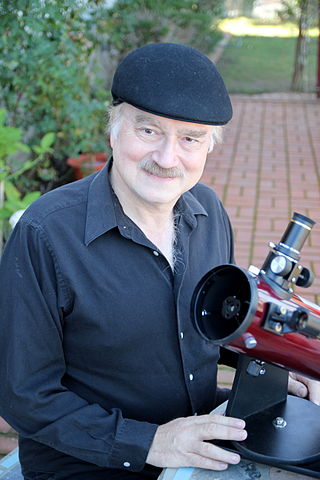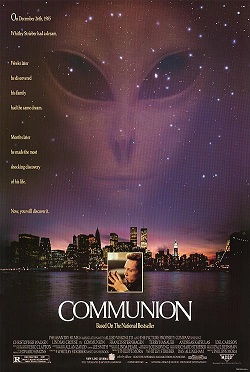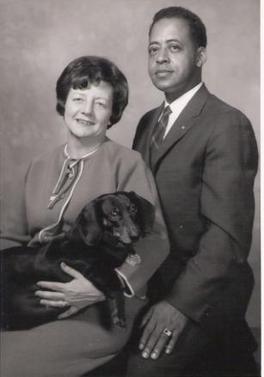Related Research Articles

John Edward Mack was an American psychiatrist, writer, and professor of psychiatry. He served as the head of the department of psychiatry at Harvard Medical School from 1977 to 2004. In 1977, Mack won the Pulitzer Prize for his book A Prince of Our Disorder on T.E. Lawrence.
In ufology, a close encounter is an event in which a person witnesses an unidentified flying object (UFO). This terminology and the system of classification behind it were first suggested in astronomer and UFO researcher J. Allen Hynek's 1972 book The UFO Experience: A Scientific Inquiry. Categories beyond Hynek's original three have been added by others but have not gained universal acceptance, mainly because they lack the scientific rigor that Hynek aimed to bring to ufology.
Grey aliens, also referred to as Zeta Reticulans, Roswell Greys or Grays, are purported extraterrestrial beings. They are frequent subjects of close encounters and alien abduction claims. The details of such claims vary widely, however Greys are typically described as being human-like with small bodies, smooth, grey-colored skin; enlarged, hairless heads; and large, black eyes. The Barney and Betty Hill abduction claim, which purportedly took place in New Hampshire in 1961, popularized Grey aliens. Precursor figures have been described in science fiction and similar descriptions appeared in early accounts of the 1948 Aztec UFO hoax and later accounts of the 1947 Roswell UFO incident.

Ufology is the investigation of unidentified flying objects (UFOs) by people who believe that they may be of extraordinary origins. While there are instances of government, private, and fringe science investigations of UFOs, ufology is generally regarded by skeptics and science educators as an example of pseudoscience.

The Travis Walton incident was an alleged alien abduction of American forestry worker Travis Walton on November 5, 1975, while he was part of a logging crew in the Apache–Sitgreaves National Forests near Heber, Arizona.
Alien abduction refers to the phenomenon of people reporting what they believe to be the real experience of being kidnapped by extraterrestrial beings and subjected to physical and psychological experimentation. People claiming to have been abducted are usually called "abductees" or "experiencers". Most scientists and mental health professionals explain these experiences by factors such as suggestibility, sleep paralysis, deception, and psychopathology. Skeptic Robert Sheaffer sees similarity between some of the aliens described by abductees and those depicted in science fiction films, in particular Invaders From Mars (1953).

Elliot Budd Hopkins was an American artist, author, and ufologist. He was a prominent figure in alien abduction phenomena and related UFO research.
Contactees are persons who claim to have experienced contact with extraterrestrials. Some claimed ongoing encounters, while others claimed to have had as few as a single encounter. Evidence is anecdotal in all cases.
Past life regression, Past life therapy (PLT), regression or memory regression is a method that uses hypnosis to recover what practitioners believe are memories of past lives or incarnations. The practice is widely considered discredited and unscientific by medical practitioners, and experts generally regard claims of recovered memories of past lives as fantasies or delusions or a type of confabulation. Past-life regression is typically undertaken either in pursuit of a spiritual experience, or in a psychotherapeutic setting. Most advocates loosely adhere to beliefs about reincarnation, though religious traditions that incorporate reincarnation generally do not include the idea of repressed memories of past lives.
Susan A. Clancy is a cognitive psychologist and associate professor in Consumer behaviour at INCAE as well as a post-doctoral fellow at Harvard University. She is best known for her controversial work on repressed and recovered memories in her books Abducted and The Trauma Myth.

Robert Sheaffer is an American freelance writer and UFO skeptic. He is a paranormal investigator of unidentified flying objects, having researched many sightings and written critiques of the hypothesis that UFOs are alien spacecraft. In addition to UFOs, his writings cover topics such as Christianity, academic feminism, the scientific theory of evolution, and creationism. He is the author of six books.

Communion is a 1989 American science fiction horror film based on the book of the same name by Whitley Strieber in 1987.
The narrative of the abduction phenomenon is an alleged core of similarity in contents and chronology underlying various claims of forced temporary abduction of humans by apparently otherworldly beings. Proponents of the abduction phenomenon contend that this similarity is evidence of the veracity of the phenomenon as an objective reality, although this belief is disregarded by most scientists, who regard alien abduction as a purely psychological and cultural phenomenon.
Alien abduction claimants are people who have claimed to have been abducted by aliens. The term "abduction phenomenon" describes claims of non-human creatures kidnapping individuals and temporarily removing them from familiar terrestrial surroundings. The abductors, usually interpreted as being extraterrestrial life forms, are said to subject experiencers to a forced medical examination that emphasizes the alleged experiencer's reproductive system.
Perspectives on the abduction phenomenon are explanations that are intended to explain claims of abduction and examination by apparently otherworldly beings. The main differences between these perspectives lie in the credence ascribed to the claims. Perspectives range from the assertion that all abductions are hoaxes to the belief that the claims are of objective happenings and separate from the consciousness of the claimants.

David Michael Jacobs is an American historian and retired Associate Professor of History at Temple University specializing in 20th-century American history. Jacobs is a prominent figure in ufology and the study of the alien abduction phenomenon, including the use of hypnosis on subjects claiming to be abductees. Jacobs has authored several books on the subject.

Stanley Tiger Romanek is an American author.

The UFO Incident is a 1975 American made-for-television biographical film starring James Earl Jones and Estelle Parsons based on the alleged 1961 alien abduction of Barney and Betty Hill.

Barney and Betty Hill were an American couple who claimed they were abducted by extraterrestrials in a rural portion of the state of New Hampshire from September 19 to 20, 1961. The incident came to be called the "Hill Abduction" and the "Zeta Reticuli Incident" because two ufologists connected the star map shown to Betty Hill with the Zeta Reticuli system. Their story was adapted into the best-selling 1966 book The Interrupted Journey and the 1975 television film The UFO Incident.
References
- 1 2 Miller, John G. "Medical Procedural Differences: Alien Versus Human." In: Pritchard, Andrea & Pritchard, David E. & Mack, John E. & Kasey, Pam & Yapp, Claudia. Alien Discussions: Proceedings of the Abduction Study Conference. Cambridge: North Cambridge Press, 1994. Pp. 59-64.
- ↑ Appelle, S. (1996). "The abduction experience: A critical evaluation of theory and evidence". Journal of UFO Studies. 6: 29–78. Archived from the original on 2014-02-26. Retrieved 2014-02-13.
- 1 2 3 4 5 6 Sheaffer, Robert. "A Skeptical Perspective on UFO Abductions." In: Pritchard, Andrea & Pritchard, David E. & Mack, John E. & Kasey, Pam & Yapp, Claudia. Alien Discussions: Proceedings of the Abduction Study Conference. Cambridge: North Cambridge Press. Pp. 382-388.
- ↑ "Testament for Believers". Time . November 18, 1966. Archived from the original on November 21, 2007. Retrieved 2008-07-30.
On the night of Sept. 19, 1961, Barney Hill and his wife Betty were driving home to Portsmouth, N.H., after a holiday in Montreal. A brilliant waxing moon sailed through a cloudless and star-fretted sky. As the Hills watched, first idly and then in terrified astonishment, one of the stars detached itself Tom the firmament and came down to earth—so near that the Hills could see it was no star.
- 1 2 3 4 5 6 7 Randles, Jenny. "Why are They Doing This?" In: Pritchard, Andrea & Pritchard, David E. & Mack, John E. & Kasey, Pam & Yapp, Claudia. Alien Discussions: Proceedings of the Abduction Study Conference. Cambridge: North Cambridge Press. Pp. 69-70.
- 1 2 3 4 5 6 7 Bullard, Thomas E. "The Variety of Abduction Beings." In: Pritchard, Andrea & Pritchard, David E. & Mack, John E. & Kasey, Pam & Yapp, Claudia. Alien Discussions: Proceedings of the Abduction Study Conference. Cambridge: North Cambridge Press. Pp. 90-91.
- 1 2 3 4 5 6 Moura, Gilda. "The Abduction Phenomenon in Brazil." In: Pritchard, Andrea & Pritchard, David E. & Mack, John E. & Kasey, Pam & Yapp, Claudia. Alien Discussions: Proceedings of the Abduction Study Conference. Cambridge: North Cambridge Press. Pp. 186-190.
- 1 2 3 Hall, Dick & Randles, Jenny & Basterfield, Keith & Moura, Gilda. "Panel on Cross Cultural Patterns in Abductions." In: Pritchard, Andrea & Pritchard, David E. & Mack, John E. & Kasey, Pam & Yapp, Claudia. Alien Discussions: Proceedings of the Abduction Study Conference. Cambridge: North Cambridge Press. Pp. 193-195.